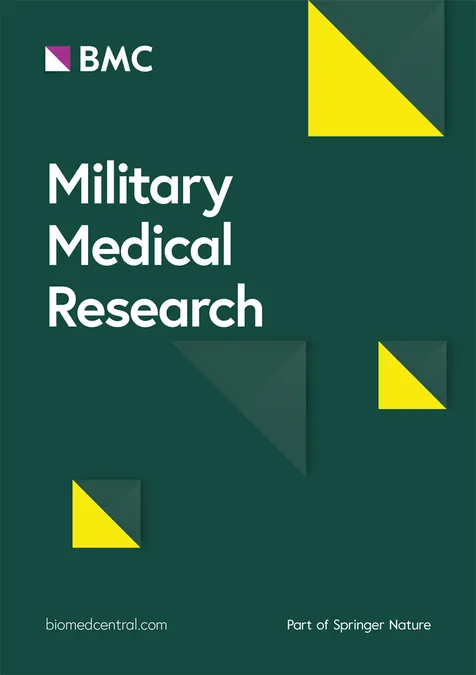
How Space Travel Challenges Cardiovascular Health—And What It Means for Earth
2025-09-01
Author: Arjun
The Crucial Link Between Space and Heart Health
As humanity embarks on ambitious adventures into space, from brief missions to the International Space Station (ISS) to plans for interplanetary travel, safeguarding astronaut health has emerged as a vital concern. Among various health factors, preserving cardiovascular function is of utmost importance. The effects of microgravity offer unique insights not just for astronauts but also for addressing chronic medical issues on our home planet.
Understanding Cardiovascular Challenges in Orbit
On Earth, our cardiovascular system fights against gravity to keep blood flowing to our vital organs. When we shift from lying down to standing, significant blood volume shifts to our lower body, triggering the arterial baroreflex to maintain blood pressure and cerebral perfusion. However, in microgravity, this delicate system is upended. With no gravitational pull, blood distribution changes, leading to a decrease in plasma volume and central venous pressure, diminishing the body’s ability to regulate blood flow effectively.
The Risks of Cardiovascular Deconditioning
Astronauts returning from long missions frequently face dizziness and issues like postural orthostatic tachycardia syndrome (POTS) due to the deconditioning of their cardiovascular system. This phenomenon mirrors challenges faced by aging adults and patients recovering from extended immobilization, highlighting significant public health concerns.
Cardiac Atrophy: A Silent Threat in Space
Just as skeletal muscles atrophy without use, so does cardiac tissue in microgravity. Long-term studies from missions aboard Skylab and the ISS indicate decreases in cardiac mass, stroke volume, and exercise tolerance during extended stints in space. While many of these changes can reverse post-mission, they still pose substantial risks for astronaut health and performance.
Beyond Gravity: The Complex Reality of Space Missions
Deep-space missions, such as those planned for Mars, introduce additional challenges such as exposure to cosmic radiation, which can impair organ function over time. With mission durations extending to three years, the physiological strain on astronauts intensifies, making it crucial to tailor pre-flight and in-flight health strategies, especially given emerging data suggesting sex differences in cardiovascular response.
New Discoveries from Suborbital Flights
Recent research from short suborbital flights has shed light on the immediate impacts of gravity changes, revealing how these microgravity experiences affect neuroendocrine and immune functions. These findings emphasize the importance of understanding the physiological stress astronauts face and adapting countermeasures accordingly.
Exercise: The Gold Standard for Cardiovascular Health in Space
Exercise remains the cornerstone of cardiovascular maintenance in space, with astronauts dedicated to rigorous aerobic and resistance training to counteract deconditioning. This focus on fitness mirrors recommendations for individuals on Earth, where many adults fail to meet minimal activity guidelines.
Innovative Technologies to the Rescue
Technological innovations are emerging to assist with cardiovascular challenges during space missions. The Gravity Loading Countermeasure Skinsuit (GLCS) simulates gravitational forces to help maintain cardiovascular tone and prevent spinal elongation. Such advancements not only support astronauts but also hold potential for treating patients here on Earth who suffer from similar cardiovascular issues.
Translating Space Medicine Innovations to Earth Care
The insights gained from space medicine are increasingly relevant to Earth healthcare. Protocols developed for astronauts have influenced cardiac rehabilitation and recovery methods for patients experiencing prolonged immobilization.
Looking Ahead: Personalizing Cardiovascular Care
The future of cardiovascular health in space may focus on tailored approaches, such as artificial gravity devices and wearable biosensors for real-time health monitoring. This personalized strategy aims not only to ensure astronaut safety but to enhance patient care back on Earth through precision health methodologies.
Conclusion: Space as a Gateway to Better Health on Earth
The study of cardiovascular adaptations in microgravity offers profound lessons on human resilience and recovery. As we prepare for journeys beyond our planet, we must also recognize the potential benefits these discoveries have for combating chronic health issues on Earth. The frontier of space exploration may hold the key to a new era of medical breakthroughs that transcend any boundaries.


 Brasil (PT)
Brasil (PT)
 Canada (EN)
Canada (EN)
 Chile (ES)
Chile (ES)
 Česko (CS)
Česko (CS)
 대한민국 (KO)
대한민국 (KO)
 España (ES)
España (ES)
 France (FR)
France (FR)
 Hong Kong (EN)
Hong Kong (EN)
 Italia (IT)
Italia (IT)
 日本 (JA)
日本 (JA)
 Magyarország (HU)
Magyarország (HU)
 Norge (NO)
Norge (NO)
 Polska (PL)
Polska (PL)
 Schweiz (DE)
Schweiz (DE)
 Singapore (EN)
Singapore (EN)
 Sverige (SV)
Sverige (SV)
 Suomi (FI)
Suomi (FI)
 Türkiye (TR)
Türkiye (TR)
 الإمارات العربية المتحدة (AR)
الإمارات العربية المتحدة (AR)